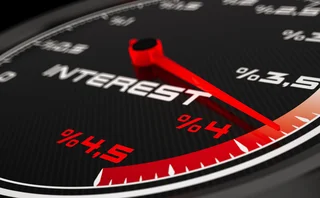
A capital idea
The development of credit derivatives is prompting increasing numbers of sophisticated investors into capital structure arbitrage. But be warned: the relationship between debt and equity is not always clear cut. Nadia Damouni reports

Capital structure arbitrage strategies are based on a simple premise: that credit risk and equity risk are unambiguously linked. When the equity price of a company declines, credit spreads widen, and vice versa. In practice, these strategies involve trading a company's debt - typically straight or convertible - and hedging a position by going short in another security of the same company, namely equity, or a derivative on the equity.
Numerous models have emerged in the past three years to exploit these relative-value opportunities, such as Moody's KMV CreditEdge Plus, RiskMetrics and CSFB's Cusp. These models are an extension of a theory put forward by Robert Merton in 1974, characterising a company's equity as a call option on its assets. Merton argues that as a shareholder, you have a long call option on the company and as a bondholder you have a short put option.
Though the term arbitrage is often defined as a 'riskless profit', many strategists believe this is a misnomer, as there is no such thing as a 'perfect' arbitrage opportunity. They prefer to describe arbitrage as a 'smart bet', and this 'smart bet' typically involves derivatives - the growth of which is the most important driving factor in the development of capital structure arbitrage strategies.
Before the emergence of a liquid credit default swap (CDS) market it was not possible to short illiquid bonds. But the staggering growth of CDS volume (up 55% between the middle and end of 2004, to a notional outstanding amount of $8.42 trillion, according to Isda, the International Swaps and Derivatives Association) and the standardisation of credit indices has changed all that.
"Three years ago we had just plain vanilla single-name CDS; two years ago, basket CDS," says Jochen Felsenheimer, head of credit and credit derivatives strategy at HVB Group in Munich. "Now we have spread options, constant maturity CDS, recovery swaps and so on. There has been an acceleration in development of new products."
All this means that, for the first time, investors can, for example, go long or short $1 billion or $2 billion credit intra-day and turn it around the following day, says Rick Briggs, global head of structured credit products trading at HSBC in New York. In the past, he says, it would have taken weeks to pull together a $2 billion corporate bond portfolio composed of the market's most liquid names, such as autos and telecoms. "Today it's instant exposure."
This liquidity, and the level of development in credit derivatives, brings with it the opportunity to short credit - and hence arbitrage between debt and equity. "Being able to short the bond side of the equation through the CDS markets has made it much more efficient and much more practical for (arbitrage) to take place," says David Vuchinich, senior portfolio manager at ING Investment Management in Atlanta.
"In the past, equity markets did their own thing, the bond market did its thing, then the CDS market comes along," sums up Brian Dvorak, managing director at Moody's KMV in London.
As a result, CDS indices traders now closely watch the major stock indices - Dow Jones, Nasdaq and S&P 500 in the US and FTSE in the UK - says Briggs. "More often than not, you will see that index markets track the Dow providing there is not a news story on a couple of credits that are in the index," he says.
Hedge funds and banks' proprietary trading desks have so far dominated the equity-debt playground. But German investment bank HVB anticipates that there will now be an influx of different types of clients, such as real-money accounts.
And as more clients start to trade across both markets, banks are responding by structuring their trading desks to take advantage of potential arbitrage opportunities. Already, many have reorganised trading floors to bring cash bond and CDS desks together, says Mike Mutti, bond strategist at Bear Stearns in New York. "This is due in part because hedge funds, traditionally large players in the credit derivatives market, have been trading across both markets for some time."
Merger fever
More recently, debt and equity trading desks have started to follow suit, taking their cue from the amalgamation of banks' debt and equity research, which many banks merged in order to bring more relative-strategy advice to clients. "In many dealing rooms the equity trader is now moving to sit next to the debt trader," says Donald Fewer, chief executive officer for North America at brokerage firm GFI Group, in New York. GFI is reflecting the change it sees in its own bank customers, he adds.
Some traders warn, however, that there are limits to the level of interdependence that can exist between credit and equity, as there are some drivers of positive equity moves that might be negative for bondholders.
Leveraged buyouts (LBOs) are a case in point. Normally when a company defaults, the order in which investors receive payment prioritises senior and subordinated bondholders over equity holders. But when a company is broken up following an LBO, equity holders can make a premium out of their positions to the detriment of bondholders.
Therefore, in the event of an LBO or where there is perceived LBO risk, the standard relationship between credit and equity breaks down: the equity price is likely to rise, and spreads, as a measure of credit risk, are likely to widen.
An example of how this can catch investors out was clearly illustrated in the case of General Motors (GM) in May. When billionaire financier Kirk Kerkorian put forward proposals for a partial takeover of the company, it sent equity prices soaring. The next day, rating agency Standard & Poor's downgraded GM to BB and Ford to BB+, sending spreads in the secondary market even wider.
Investors who had sold CDS protection, or bought GM bonds, and who had shorted equity were badly hit. "The idea early in the year was that auto sales were declining, interest rates were rising steadily, and auto manufacturers' equity would likely underperform their debt," says Michael Fuhrman, head of electronic trading for North America at GFI. In a now well-known story, the arbitrage traders suffered the worst of all worlds, as the equity price rose and debt plummeted.
This 'one-off' event should not, however, deter sophisticated traders from capital structure arbitrage. "Whenever you deal with arbitrage there is the issue of imperfect information and relative value assigned to that information as determined by the market," says Fewer. "This creates proprietary assessments of value, which drives the arbitrage."
The over-riding issue, he says, is that the instruments used to express these value assessments have become more standardised and efficient. "This is an area that will continue to develop and continue to grow."
Only users who have a paid subscription or are part of a corporate subscription are able to print or copy content.
To access these options, along with all other subscription benefits, please contact info@risk.net or view our subscription options here: http://subscriptions.risk.net/subscribe
You are currently unable to print this content. Please contact info@risk.net to find out more.
You are currently unable to copy this content. Please contact info@risk.net to find out more.
Copyright Infopro Digital Limited. All rights reserved.
As outlined in our terms and conditions, https://www.infopro-digital.com/terms-and-conditions/subscriptions/ (point 2.4), printing is limited to a single copy.
If you would like to purchase additional rights please email info@risk.net
Copyright Infopro Digital Limited. All rights reserved.
You may share this content using our article tools. As outlined in our terms and conditions, https://www.infopro-digital.com/terms-and-conditions/subscriptions/ (clause 2.4), an Authorised User may only make one copy of the materials for their own personal use. You must also comply with the restrictions in clause 2.5.
If you would like to purchase additional rights please email info@risk.net
More on Markets
Dutch pensions weigh hedge unwinds ahead of transition
As January 1 nears, Dutch pension funds consider unwind timing to avoid rush to the exit in thin year-end liquidity
Dealer views mixed over future of profitable EM FX carry trade
Emerging market FX carry trades have generated 7.5% returns since April, but dealers question longevity
Playing the yield: rates rev up structured products
Higher government bond yields and steeper forward curves fuel demand for new range of fixed income structures
Banks scale back short-dated FX swaps trading, BIS finds
Interbank FX swaps hit by higher short-term hedging and funding costs, while longer-dated forwards activity jumps
LSEG streamlines post-trade efficiency across cleared and uncleared markets
LSEG’s Post Trade Solutions extends clearing-style efficiencies to bilateral markets, helping Apac clients navigate rising margin and risk management pressures
Ardagh review sparks CDS warnings
Lawyers warn a panel’s decision on the company’s restructuring will have wider implications
All that glisters: precious metal volumes surge on FX venues
Gold and silver liquidity on foreign exchange trading platforms improves as more dealers link precious metals with e-FX
MAS official flags risks in Asia’s path to T+1 settlement
Regulator says region faces “unique challenges” in establishing a shorter settlement cycle







